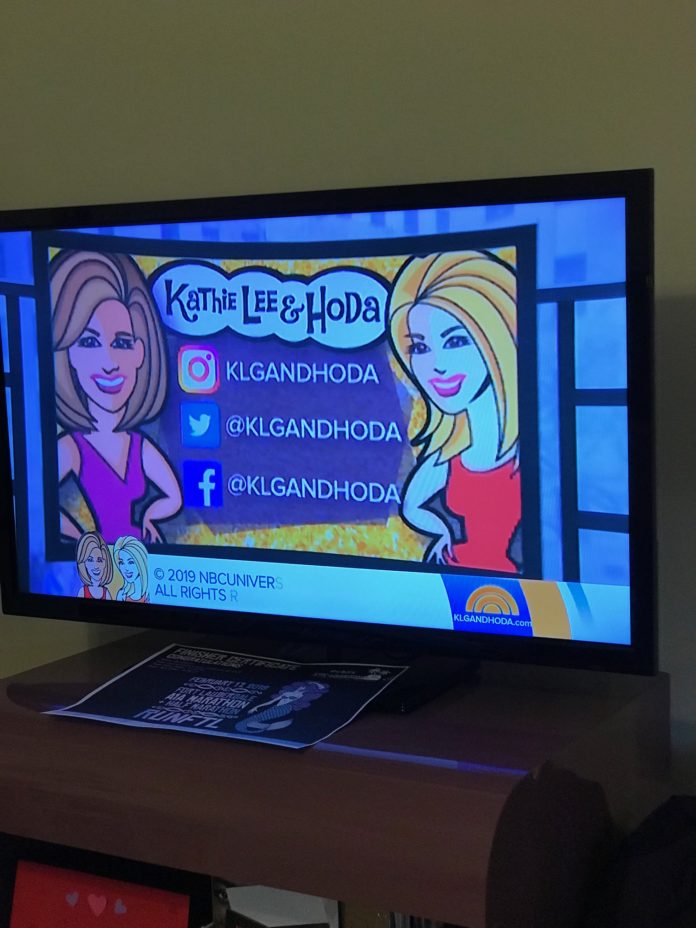Following a recent change of residence, our editor-in-chief invested in a $21 digital TV antenna and hooked it up to a television set in his home office.
What was the result? He says it’s best to perhaps stick with a MVPD if you truly want the TV service everyone deserves — or, at least an vMVPD.
By Adam R Jacobson
DELRAY BEACH, FLA. — Ever since I was a student in Madrid some 30 years ago, my TV viewing had diminished substantially until recently. Since 2011, a plethora of amazing programming has captured my free-time, resulting in various sorts of binge-watching.
Sure, there was The Sopranos on HBO, but I didn’t have a subscription. I happened to have Showtime, and I started to watch Homeland. Then came the OTT wave, with Netflix’s House of Cards ushering in a flood of shows I’m addicted to. Today, nearly all of the programs I watch are delivered by way of Netflix. For network shows such as NBC’s Manifest, I access the program with a minimum of commercials a few days later via Hulu — free to Sprint customers. Amazon Prime is showing signs of life beyond The Marvelous Mrs. Maisel and the cult fave The Man in the High Castle.
Notice how broadcast TV has not been noted. That’s one problem facing companies such as Nexstar Media Group, The E.W. Scripps Co., Gray Television and Sinclair Broadcast Group. Original programming worthy of consumer time is more important than ever, and Nexstar’s acquisition of Tribune will put the company on equal footing to Scripps and Sinclair; Gray has Raycom, which had cut its teeth with its Raycom Sports offering.
However, there’s a whole other problem that broadcast TV companies face with respect to the roll-out of digital multicast offerings, ATSC 3.0, better news and weather, addressable advertising, improved picture and sound, and all of the other amazing things Pearl TV and the Advanced Television Systems Committee will begin touting as the voluntary introduction of next-gen broadcast TV signals commences.
It has everything to do with reception. It’s an issue.
Back when people were wondering who shot J.R. (millennials, please ask your dad or mom what this means), some people had “rabbit ears,” those pointy antennas affixed to the back of a TV set in the kitchen. Many had aerial antennas on the roof of the home, connected to a living room TV via coaxial cable. In a world where cable TV was still nascent, millions of Americans had to suffer through snowy pictures and adjusting the antenna to get a particular channel.
Today, getting the particular channel is the problem. Unlike analog channels, there is no fuzzy, barely-visible picture. With digital TV, you either get the station, or you don’t.
A few weeks ago I relocated from Hollywood, Fla., just minutes from the Miami DMA antenna farm, to Delray Beach, Fla. That’s roughly 35-40 miles north of the transmitters for most Miami TV stations, and perhaps 20 miles from the nearest West Palm Beach transmitters.
In an analog world, this is nirvana — I’d be able to pick up broadcast TV stations from both DMAs. Now that I’m in the West Palm Beach DMA, Comcast will not bring me any Miami TV station except one that it owns — Telemundo O&O WSCV-51.
Since this was a secondary TV, I didn’t want to invest a lot in a fancy antenna. So, I purchased a Jetortep HDTV antenna 105 mile range antenna for $21 or so on Amazon.com. I installed it, did an auto channel scan, and was promptly disappointed with what this antenna was able to receive.
At first, it detected some 22 channels. But, this included digital multicasts. As such, in the “old mindset” of what a channel was, perhaps five were found.
Fumbling around with the antenna was done. But, with a digital TV tuner, you can’t scan and adjust the antenna. So you have to move the antenna, scan for channels, and pray.
This particular antenna has a local and DX amplifier, supposedly to bring in those far-away channels. It turns out it is as useful as misters on a humid afternoon in Boca Raton.
Finally, after five antenna moves and a channel scan, I could pick up some 42 channels. The antenna is “temporarily” sitting on top of the headrest of a reading chair.
What can I get? South Florida PBS’s WXEL-42, and WPBT-2 and its three multicast offerings; NBC O&O WTVJ-6 in Miami and Cozi TV on DT-2; The Health Channel (also a WPBT multicast on WURH-13; PBS member station WLRN-17 in Miami; Univision O&O WLTV-23 and digital multicast channels Justice, Escape, and Laff; Miami’s MyNetwork TV affiliate WBFS-33 and two digital multicast offerings; Miami and West Palm Beach channels owned by Ion Television; Miami’s home for The CW Network, WSFL-39, and DTV networks Comet TV, Antenna TV, and ThisTV; Telemundo WSCV-51 and Teléxitos on 51.2; Broward County’s educational WBEC-63; and UniMás WAMI-69 and digital multicasts Bounce, getTV, GRIT and Quest.
What didn’t I get? Well, any ABC or FOX station, for starters. On attempt three of five to scan up Miami channels, the main desire of getting an antenna for the TV, I sort of picked up WPEC-12, the Sinclair Broadcast Group-owned CBS affiliate in West Palm Beach. The same was set of The E.W. Scripps Co.-owned NBC affiliate WPTV-5 in West Palm Beach.
While this is disappointing, it made me realize that, at the very least, I had one Miami network TV station offering me local news, traffic, weather and sports in English, and two in Spanish.
If I wanted CBS, I could move the antenna and rescan the channels once again, until it actually came in. ABC? Well, I have a Roku device allowing me to get WPLG-10‘s local news programming via an App, NewsOn, that also can deliver local news programming from the Hearst-owned ABC affiliate in West Palm, WPBF-25. This station’s transmitter is in Tequesta, in the far northeastern part of Palm Beach County.
FOX? Thankfully our home has Comcast to deliver WFLX-29, but I do miss Ed Ansin-owned WSVN-7, even with their sensational newscasts.
This brings us to my point. I can just go to https://wsvn.com/ and watch live news whenever there is a newscast. Bam!
With Roku and the internet, I can watch newscasts from Dayton; Savannah, Ga.; New York and Hawaii News Now.
So … about that digital antenna. If you love The Rockford Files and oxygen therapy user-targeted commercials, Cozi TV is for you. Too bad CNBC isn’t on an O&O’s digital multicast channel, but that would kill cable TV and those all-important retransmission fees.
Oh yes … retransmission fees. Thanks to declining advertising, broadcast TV companies rely more than ever on those ever-increasing retrans fees to make quarterly profits shine. So, not getting free over-the-air FOX isn’t a problem. By having an vMVPD like DirecTV NOW let alone Comcast service, I’m a subscriber and the local affiliate can get dollars for the rebroadcast as a result.
But, what about that great next-gen signal that WSVN-7 or WFLX-29 will soon offer, even if a decade away? How will I get it?
Maybe Comcast will invest the money to bring that signal to viewers. Maybe it won’t. Perhaps a bluetooth-powered app on a smartphone designed to pull in broadcast TV signals via a chip (hello, Apple and NextRadio) will be the new set-top box come 2022?
What’s certain is that broadcast TV’s ATSC pitch sounds more and more like HD Radio in 1996. There’s lots of promise, and lots of cost. But, is digital technology advancing so fast that the benefits next-gen broadcast TV brings are for naught, since over-the-air signal delivery remains problematic in a digital world and 5G will open the floodgates for online-based communication?
As we ponder these questions, I flipped on a 25-year-old desktop radio purchased at a Brookstone in downtown Washington, D.C. It can receive radio stations from both Miami and West Palm Beach, and the reception is good.
But, who has a radio in the home anymore? Who has a clock in an office anymore, or the bedroom, thanks to smartphones?
The TV will always have a place in the home. But, how we consume televised programming is rapidly changing, and broadcast TV’s “live” lure is definitely its biggest winning proposition.
How that content is accessed may depend more on 5G and a good WiFi connection then that ATSC 3.0 over-the-air money pit some broadcast companies would rather not deal with by selling their assets to a company able to invest in what could be a late-to-the-game technology.
The views expressed by Radio + Television Business Report’s columnists and editors are those of the writer only and not of Streamline Publishing or any of its owned publications.





